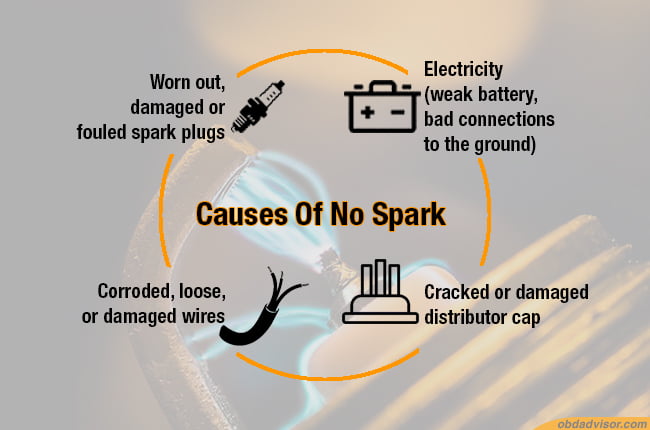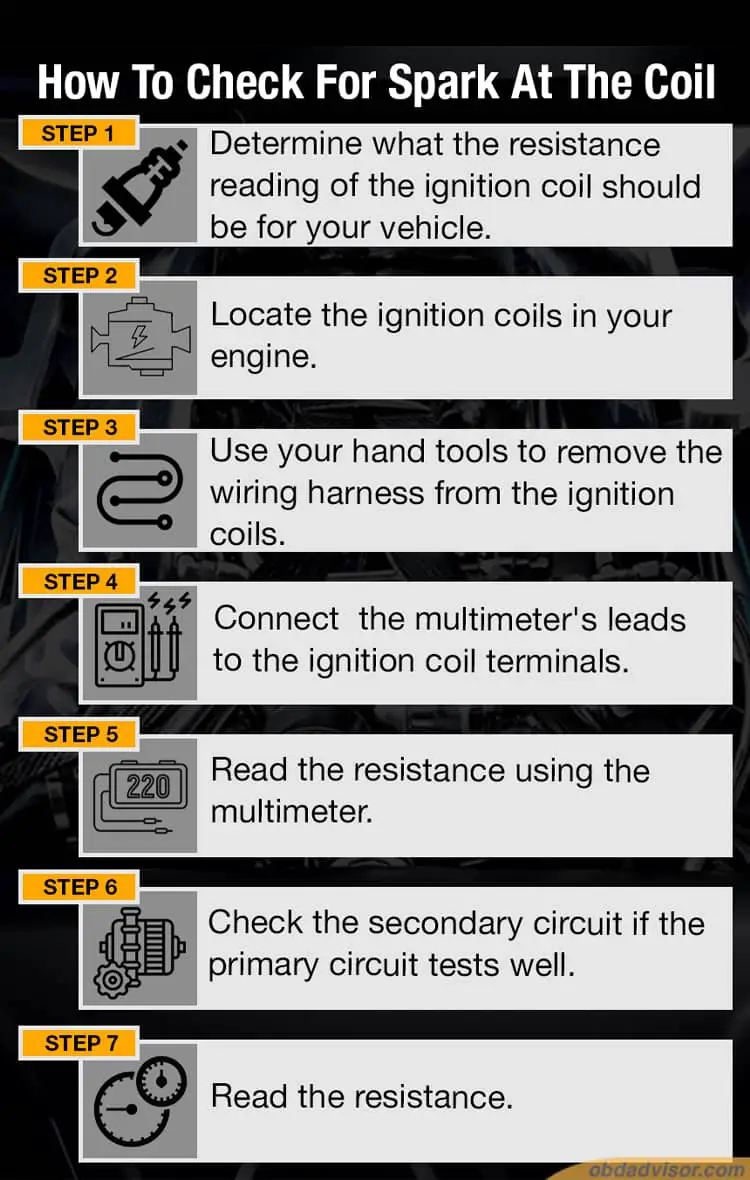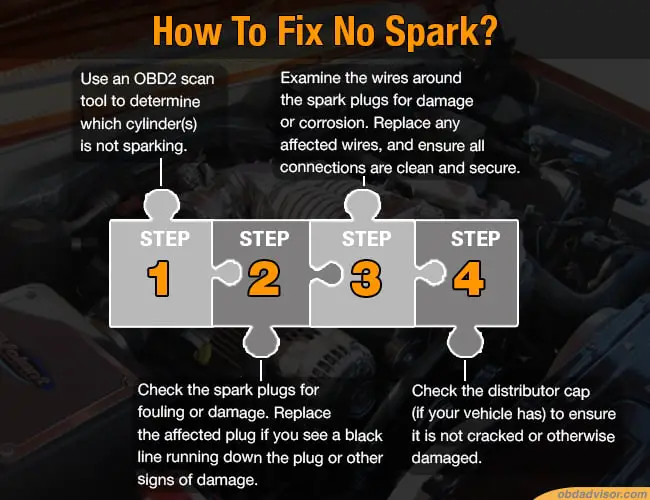A 5.7 vortec no spark from coil condition can prevent your truck from starting, so it is an issue you want to fix quickly if it is happening to you. Found in Chevy and GMC trucks, 5.7 vortec engines are durable and reliable, as well as being easy to repair and improve on the whole.
What causes a no spark condition—and how do you fix it if it’s happening in your truck? We will walk you through the most common answers below.

Causes Of No Spark From Coil On 5.7 Vortec
The high-voltage spark produced by the ignition coil is what fires up the engine, and there are a lot of conditions that must be met for this to happen. Thus, there are several different problems that can cause spark loss, ranging from simple, easy fixes to more complex issues.
Anything that prevents voltage from jumping a spark plug’s electrode gap will cause loss of spark. Issues with the spark plugs themselves tend to be the most common cause of this problem. If the spark plug is worn out, damaged, or fouled, it can lose its ability to generate a spark.
The cause of no spark can also be electrical. A weak battery can lead to this condition since it cannot generate enough power to create a spark. Bad connections to the ground can also create a no spark condition, though this is a less common cause.
Corroded, loose, or damaged wires around the spark plug can prevent them from properly igniting, as can corroded connections. These breaks in the line create an open circuit, causing the ignition coil to behave as though it’s switched off.
Finally, it may be an issue with the distributor cap. When the system is working properly, the charge from the ignition coil flows to the distributor cap before going to the spark plugs. If the cap is cracked or damaged, it could impair the charge’s ability to flow.

How To Check For Spark At The Coil?
The first place you should start if you have a no spark condition is the ignition coil. This is part of the secondary ignition system of modern engines and is the component that converts the 12-volt charge from the battery to the thousands of volts required for a powerful spark.
If you’re getting a spark at the coil but a no spark condition for the engine, this is a sign the spark plugs or wires around them are the issue. That’s why this is the first thing you should check when you have a no spark issue, as it will give you a clearer picture of where the problem originates.
The easiest way to test the ignition coil is with a digital multimeter. Aside from that, the only supplies you’ll need are the hand tools for removing the ignition coil from the vehicle. Once you’ve assembled these tools, just follow these steps:

- Determine what the resistance reading of the ignition coil should be for your vehicle. You can find this information in your vehicle’s repair manual. It will normally be expressed as a range and measured in ohms.
- Locate the ignition coils in your engine. Most often, these are bolted to the spark plugs or mounted on top of the engine. Your vehicle’s repair manual will help you find them if you’re having trouble.
- Use your hand tools to remove the wiring harness from the ignition coils. Most engines are held on by 1-2 bolts, so they are typically very easy to take out.
- Connect the leads of the multimeter to the ignition coil terminals. Make sure to match the positive lead to the positive coil and the negative lead to the negative coil if this is marked on your ignition coil (some coils have two pins with no markings).
- Read the resistance using the multimeter. It should fall between .4 and 2 ohms for most coils. A reading of 0 indicates an internal short in the ignition coil while a reading over 2 suggests an open circuit. In either case, the coil should be replaced.
- If the primary circuit tests well, you should check the secondary circuit. You can do this by connecting the multimeter to the coil’s positive terminal, with the negative lead connected to the high output terminal that sends current to the spark plugs.
- Read the resistance. The secondary resistance for most ignition coils is between 6,000 and 10,000 ohms. Similar to the primary circuit, a 0 reading indicates a short, while a high reading indicates an open circuit.
How To Fix No Spark?
If you received a short or open circuit reading in the test above, the fix is easy: replace the ignition coil. Things can get more complicated if the ignition coil is functioning correctly, however. Here are the best steps to follow if this is the case for you:

- Use an OBD2 scan tool to determine which cylinder(s) is not sparking. Pay attention to any other codes that trigger, as well, especially those related to the fuel system, as these can help guide your repair.
- Check the spark plugs for fouling or damage. If you see a black line running down the plug, this suggests the spark is traveling to the ground instead of crossing the gap. Replace the affected plug if you see this or other signs of damage.
- Examine the wires around the spark plugs for damage or corrosion. Replace any affected wires, and ensure all connections are clean and secure.
- If your vehicle has a distributor cap, check it to ensure it is not cracked or otherwise damaged. Instead, many modern vehicles use an electronic control module, so this step will not be relevant to all engines. You can find out what your truck uses by looking in the repair manual.
Conclusion
In most cases, a no spark condition is a relatively simple fix. That said, it can be caused by more complicated issues, up to and including a bad ignition module. If the tests and fixes above don’t do the trick, take your vehicle to a mechanic. They can do a more in-depth diagnosis to determine (and repair) the true root of the issue.